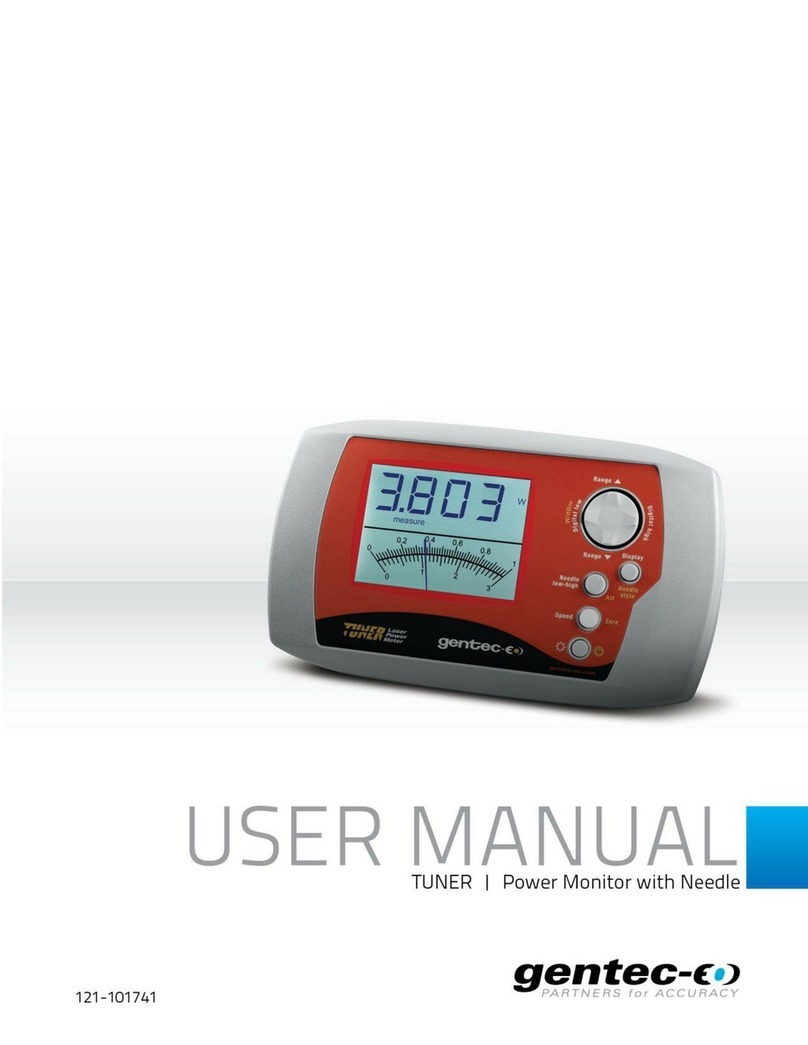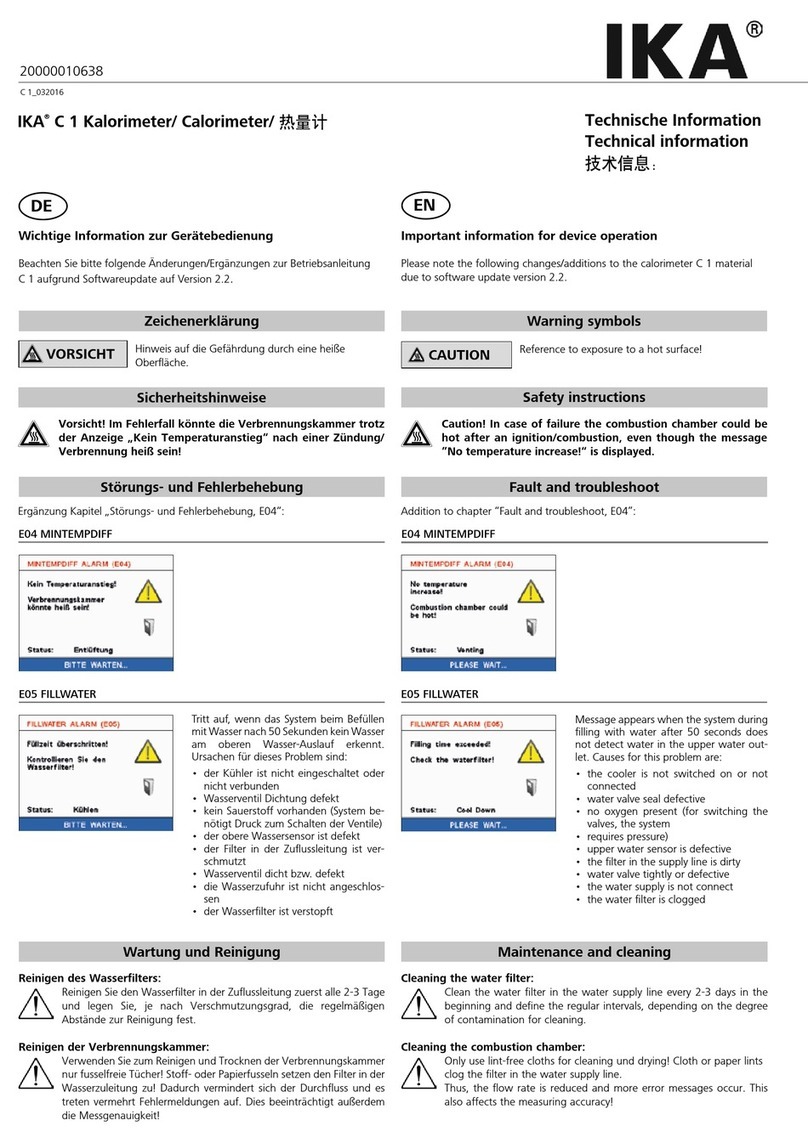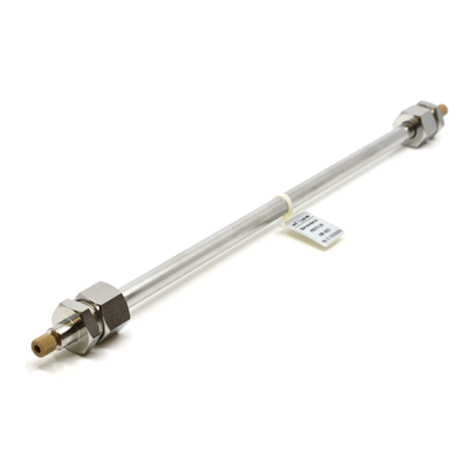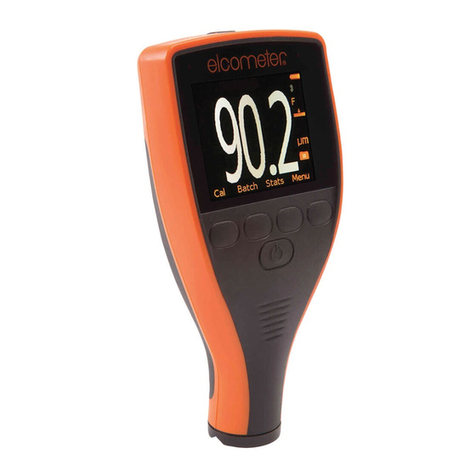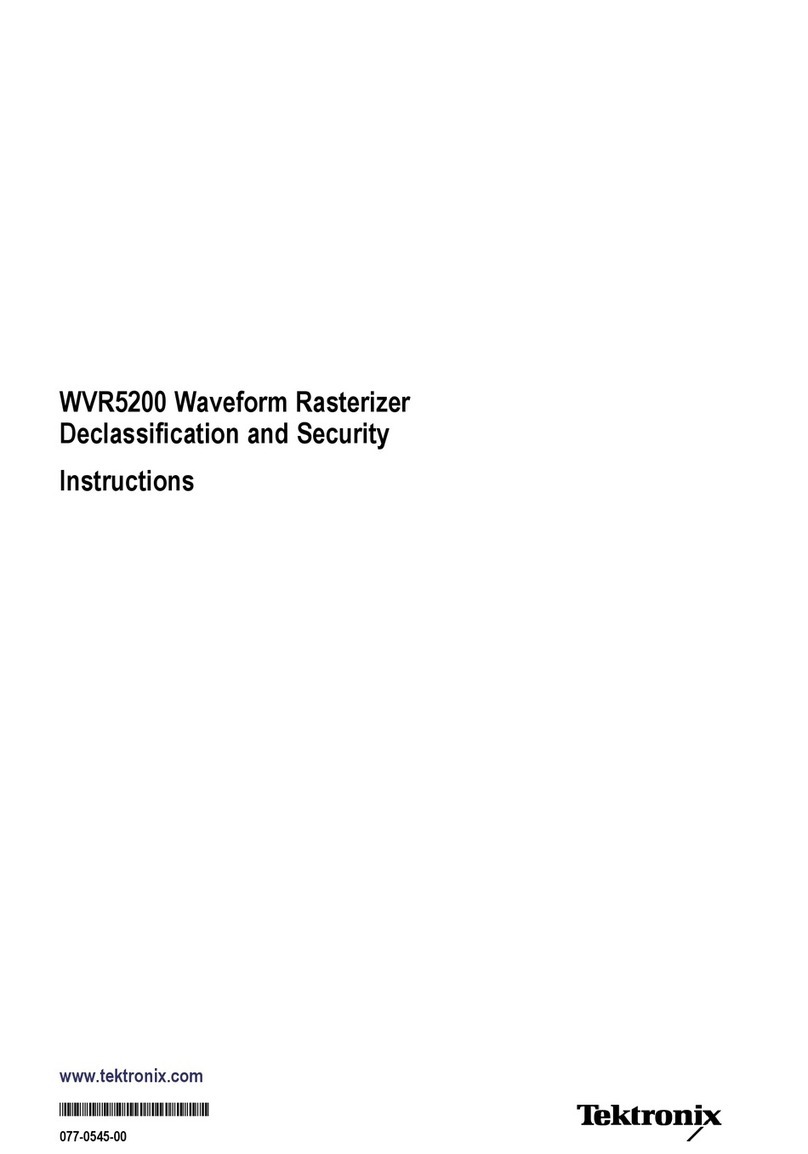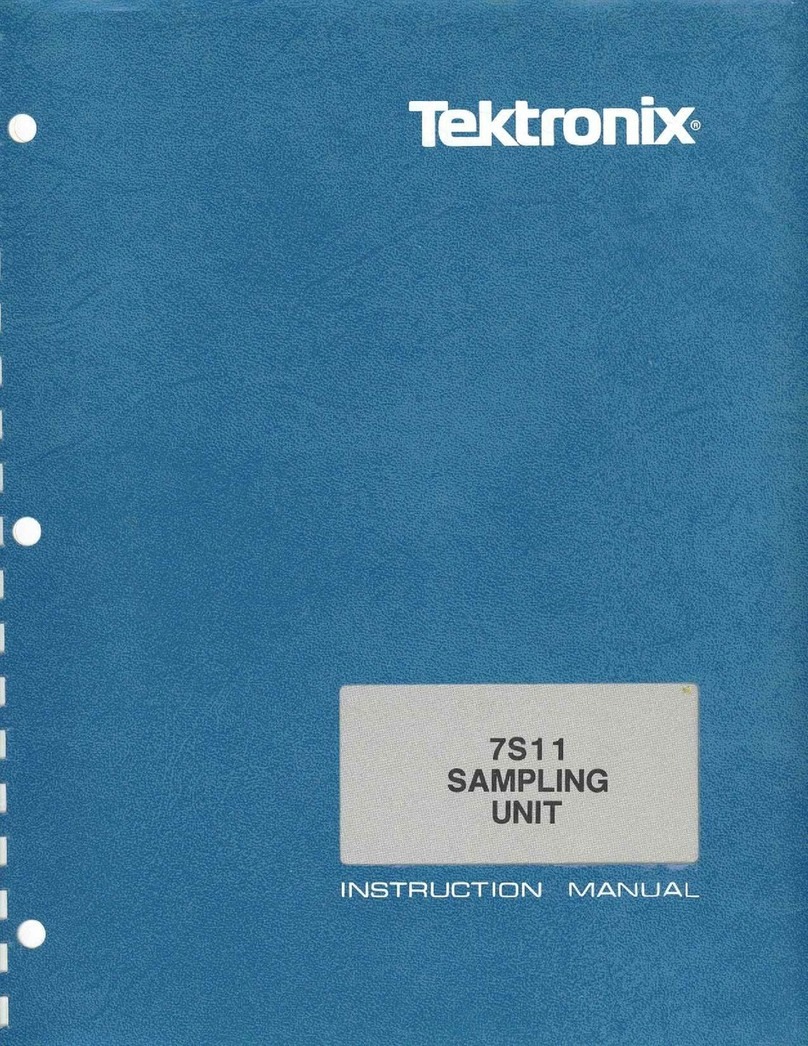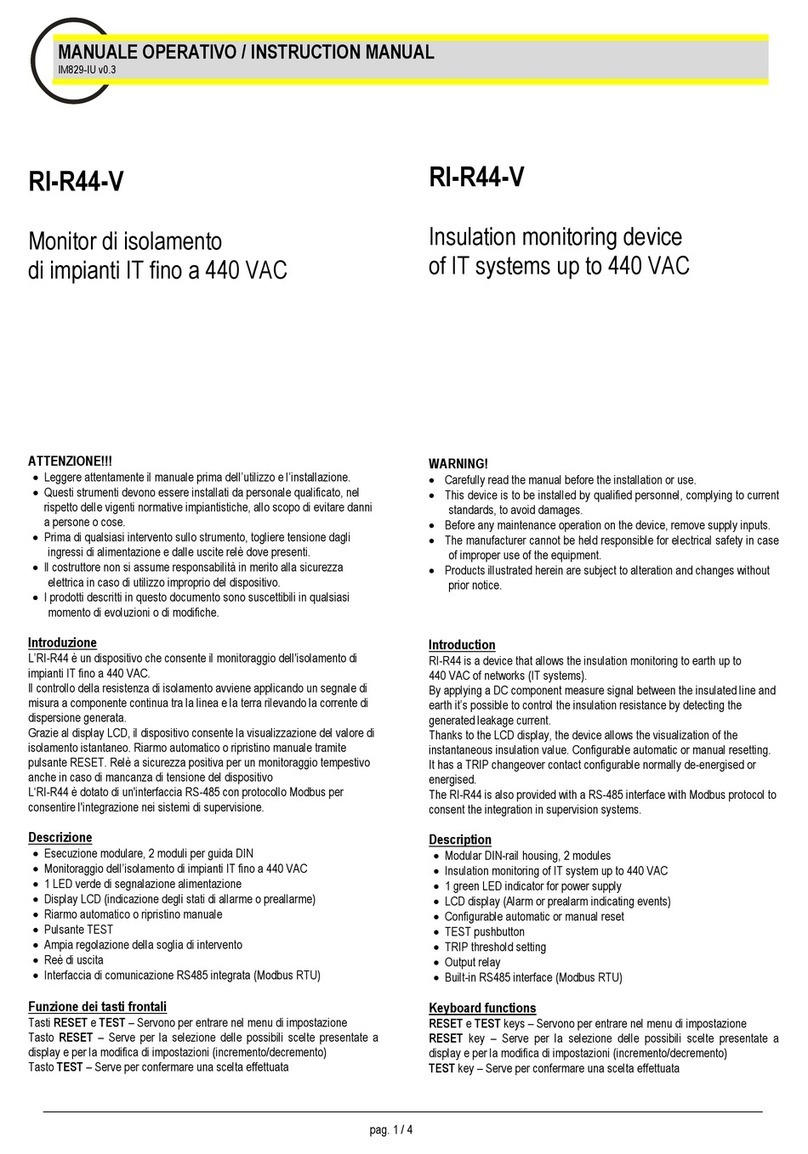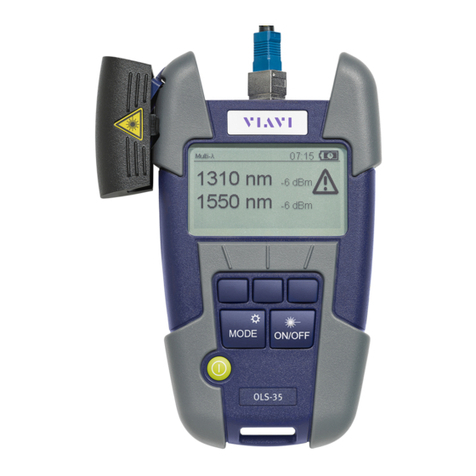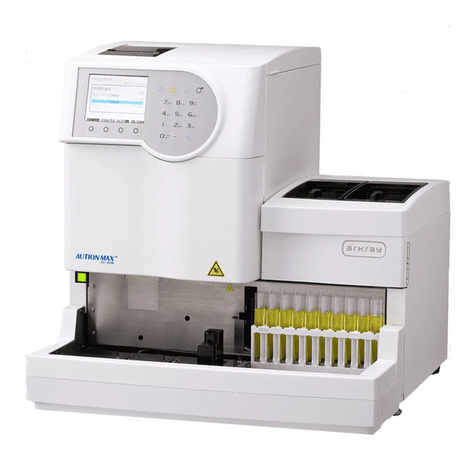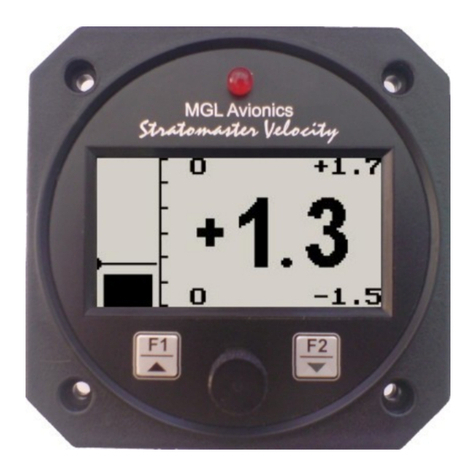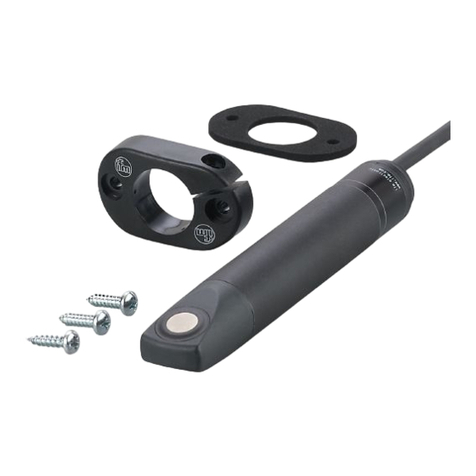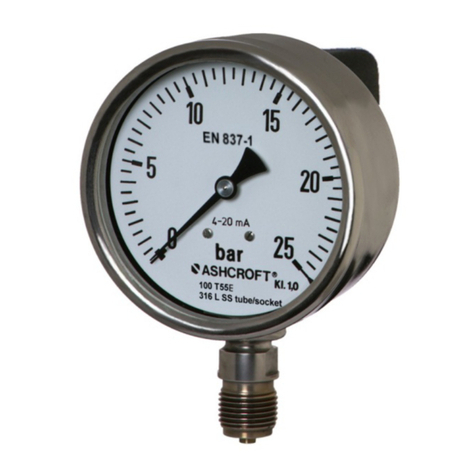
SDX-1239 Operating Instructions
Rev - 3/21/2017 Page 11 of 22
SDX-1239 Pulse Width Correction
The SDX-1239 must measure pulse with widths varying from 95ns to 180ns, at rep rates
from 40kHz to 90kHz. This will introduce measurement nonlinearity due to integration
error in the head. The SDX-1236 is calibrated with a pulse width of 10ns. To make sure
the measured energy is accurate at these long pulse widths, the SDX-1239 will correct the
measurements. It will measure the period counter between pulses and apply a 2nd order
polynomial correction. This correction is the best fit to the measurement variation.
The correction equation is:
A*(period counts)^2 + B * period counts + C
The values of A, B, and C can be set with the PLY command. To disable corrections,
send 0 for A and B, and 1.00 for C.
It is recommended that the values be left at the defaults ones. Note than when the SDX-
1239 powers on it will always reset to the default values.
SDX-1239 AOM Control in Control Mode
If the SDX-1239 is in control mode, it must adjust the AOM voltage so that the mean
error stays as close to 0 % as possible. Changing the AOM Voltage to a new voltage will
let more or less radiation through the AOM.
The SDX-1239 uses a simple proportional control. Max AOM Voltage is 1V, which
allows 100% transmission of light. Min AOM Voltage is 0V, which allows 0%
transmission of light, but the transfer curve is not linear.
Positive mean error means energy is lower than target, need to increase energy, so the
SDX-1239 will turn UP the AOM Voltage.
Negative mean error means energy is higher than target, need to decrease energy, so the
SDX-1239 will turn DOWN the AOM Voltage
The SDX-1239 uses a PID controller with P gain only. The value of proportional gain is
set with the POR command. Higher gains will converge faster, but may overshoot. Lower
gains will not overshoot, but will converge more slowly. The method is shown below.
adjustment value = proportional gain * mean error;
adjusted value = aom voltage + adjustment value;




















